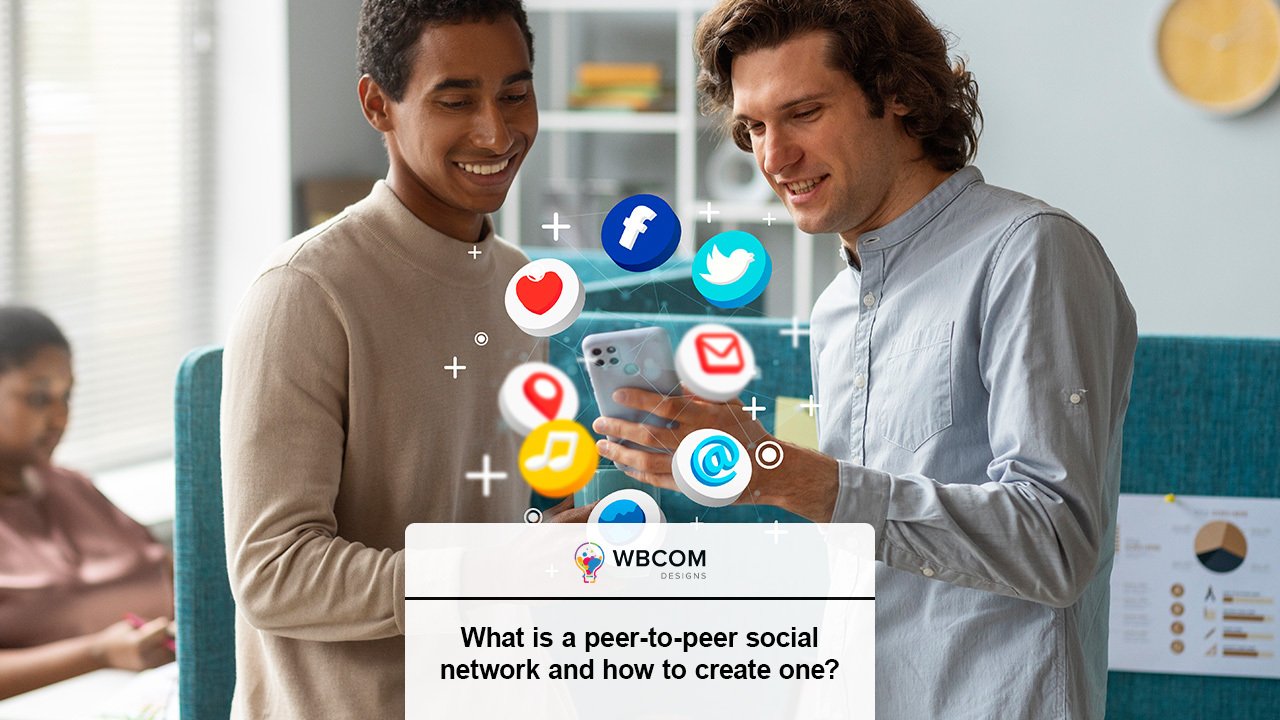Are you tired of surrendering your personal data to faceless corporations? Have you ever wondered what reclaiming control of your social network would be like? Picture a digital realm where every connection is built on trust, information flows freely between peers, and your online interactions are truly private and secure. Welcome to the world of peer-to-peer social networks—a groundbreaking paradigm shift that empowers individuals like never before. In this blog post, we’ll explore the captivating realm of peer-to-peer social networks, their significance in an era of data breaches and surveillance, and most importantly, how you can create your very own network of trust. Buckle up, because we’re about to embark on a journey that will forever change the way you perceive social media. Get ready to break free from the shackles of centralized control and embrace the true power of peer-to-peer connections.
Try BuddyX Theme DemoBuy BuddyX Pro Theme and Community bundle add-onto create a highly engaging Community Platform Today!
Table of Contents
ToggleWhat is a Peer-to-Peer Social Network?
A peer-to-peer (P2P) social network is a type of online network that allows users to connect and share information without going through a centralized server or service provider. Instead, peers directly interact, forming connections that don’t depend on a central server or third-party website. Because of this, P2P networks have become increasingly popular in recent years as a more secure and private alternative to traditional online social networks.
What are the benefits of a Peer-to-peer social network?
Peer-to-peer social networks offer users a range of advantages and benefits that set them apart from traditional centralized networks. Let’s delve into some of these benefits:
- Increased Privacy: One of the primary concerns with centralized social networks is the potential for data breaches and unauthorized access to personal information. In a peer-to-peer network, data is distributed across multiple nodes, making it more difficult for hackers or malicious actors to compromise user privacy. Users have greater control over their personal data and can choose what information to share and with whom.
- Data Control: Unlike centralized networks where user data is stored on servers owned by a single entity, peer-to-peer networks distribute data across multiple participants. This decentralized nature puts users in control of their data, reducing the risk of monetizing or exploiting it without their consent. Users can decide how their data is used, shared, or deleted, empowering them to protect their digital identity.
- Enhanced Security: Centralized networks present a single point of failure, where a breach or system failure can expose vast amounts of user data. In contrast, peer-to-peer networks distribute data across a network of interconnected nodes, making it more resilient against attacks. Additionally, cryptographic techniques can be employed within peer-to-peer networks to ensure secure and encrypted communication, further enhancing security and protecting user information.
- User Empowerment: Peer-to-peer social networks prioritize user autonomy and empowerment. They allow individuals to connect directly with others, fostering a sense of community and eliminating intermediaries. Users have the freedom to shape their own network experiences, discovering and engaging with like-minded individuals based on their interests, rather than being subject to algorithmic manipulation or curated content.
- Meaningful Connections: Peer-to-peer networks facilitate the formation of more authentic and meaningful connections. By removing centralized control, users can interact with others based on shared interests, values, or goals, rather than being limited by predetermined algorithms or commercial interests. This creates opportunities for genuine connections, meaningful conversations, and collaboration within niche communities.
- Resilience and Openness: Peer-to-peer networks are inherently resilient to censorship or shutdowns, as they operate on a distributed architecture. The absence of a central authority means that no single entity has the power to control or restrict access to the network. This openness encourages innovation, diversity, and the exploration of new ideas, providing a platform for free expression and creativity.
Peer-to-peer social networks offer a refreshing alternative to the conventional social media landscape, placing privacy, data control, and user empowerment at the forefront. By embracing these networks, users can enjoy enhanced security, forge meaningful connections, and take back control of their online experiences. In the next sections, we’ll dive deeper into the mechanics of creating a peer-to-peer social network, so you can embark on your own journey toward a more private and empowering digital realm.
How to create a peer-to-peer social network website?
Creating a peer-to-peer (P2P) social network website can be daunting, but it doesn’t have to be. With the right tools and guidance, you can create a secure and reliable P2P social network to unite people. Here are the steps to creating your own P2P social network:
Choose a platform to build your social network on
When deciding on a platform to build your peer-to-peer social network, there are several factors you should consider.
First and foremost, you need to think about the platform’s scalability. Depending on your goals for the network, you may need something that can handle a large user base or a smaller one. Additionally, you should assess the level of customization available with various platforms. Some may offer more flexibility and features than others.
That’s why we recommend you build your peer-to-peer social network on WordPress. It is a popular CMS platform that hosts most online websites. It also provides excellent benefits regarding flexibility and customizability.
Get started with the process on WordPress
Creating a peer-to-peer social network on WordPress is a great way to facilitate communication and connection between members of your community. With WordPress, you can create a robust platform enabling people to share their ideas, experiences, and resources.
To get started, the first step is to install the WordPress software onto your web hosting account. Once installed, you can move forward to install the BuddyPress plugin. And you’ll be ready with a default social network website.
Choose a theme for your P2P social network
The next step for creating a social network includes choosing a proper theme. A social network is required to have an excellent theme that attracts visitors! We have the perfect social network theme for you; it’s BuddyX. It is a free WordPress theme for creating social networks, online communities, e-learning platforms, and membership websites. You can read more about the BuddyX theme in this review blog.
Extend your P2P social network with robust plugins
A peer-to-peer (P2P) social network is an online platform that enables users to connect directly with each other without the need for a centralized, third-party server. This type of network provides numerous advantages, including increased privacy and anonymity, reduced latency, and more efficient use of resources.
Creating a P2P social network can be daunting due to the engineering process’s complexity. However, using WordPress plugins can make the process easier and more efficient. There are several plugins available that will help you create a secure, distributed peer-to-peer network quickly and painlessly.

Wrapping Up Words
In conclusion, peer-to-peer social networks are a great way to connect people with shared interests and passions. By allowing users to share content, engage in discussions, and build communities, these networks provide a platform for meaningful interactions and relationships. Creating a peer-to-peer social network may seem daunting, but it can be a rewarding and successful venture with the right tools and strategies. Whether you want to create a network for a specific community or connect with like-minded individuals, a peer-to-peer social network could be the perfect solution.







